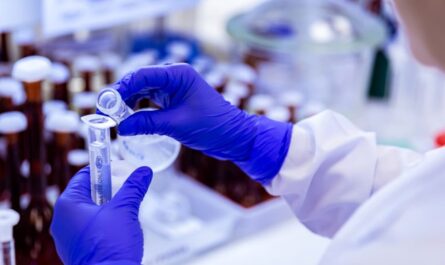Potash Fertilizers: Essential for Plant Growth and Soil Health
Introduction to Potash
Potash refers to various mined and manufactured salts that contain potassium in water-soluble form. Potassium is one of the three primary macronutrients used in agriculture, the other two being nitrogen and phosphorus. Potash fertilizers are made up of potassium compounds combined with various elements, with potassium chloride and potassium sulfate being the most common forms.
Importance of Potassium for Plants
Potassium is essential for plant growth and plays a vital role in many plant functions. It regulates plant processes like photosynthesis, protein synthesis, starch formation and sugar translocation. Potassium makes plants more resistant to diseases and enhances crop quality. Adequate potassium levels in soil ensure robust root development and better water and nutrient uptake by plants. It also improves the ability of plants to withstand environmental stresses like drought, frost and heat. Potassium helps to optimize the utilization of other nutrients absorbed by plants.
Role of Potash in Improving Soil Health
Fertilizers help to maintain soil structure and tilth. They improve the ability of soils to retain nutrients and moisture. This prevents leaching of valuable elements like nitrogen and phosphorus below the root zone of plants. Potassium application results in better aggregation of soil particles. It also supports beneficial soil microorganisms involved in nutrient cycling. Soils treated with sufficient potash fertilizer are more porous and friable. This enhances root penetration and encourages deeper planting of crops. The cation exchange capacity of soils is increased with regular potash fertilization, allowing them to store more nutrients for plant uptake.
Types of Potash Fertilizers
Muriate of Potash (KCl)
Potassium chloride or muriate of potash is the most commonly used potash fertilizer. It contains around 60% potassium oxide. It is extracted from underground potash deposits through conventional mining. Muriate of potash dissolves and releases potassium ions readily in soil solution.
Sulfate of Potash (K2SO4)
Also called SOP or sulphate of potash, it contains around 50% potassium oxide and 18% sulfur. It has weaker acidifying effect on soil compared to muriate of potash. SOP supplies both potassium and sulfur to plants. It is favored in areas prone to chloride accumulation in soil.
Potassium Nitrate (KNO3)
Containing 13% nitrogen and 38% potassium oxide, potassium nitrate serves as a dual-purpose fertilizer. It is usually applied to crops where both nitrogen and potassium are deficient. However, it is relatively expensive compared to other potash sources.
Potassium Magnesium Sulfate (KMgSO4)
Also referred to as sulfate of potash magnesia or SOPM, it supplies potassium, magnesium and sulfur. Its application particularly benefits magnesium-deficient soils. Potato and vegetable crops respond well to SOPM.
Common Potassium-Containing Materials
Wood ash: Wood ash from burning contains 5-10% potassium oxide. It is a good source of potash for small-scale organic agriculture.
Langbeinite: A mined potash material containing around 22% potassium oxide, 11% magnesium oxide and 27% sulfur. It gradually releases nutrients in soil.
Manure: Farm yard manure and compost contain varying amounts (1-2%) of plant-available potassium. They are valuable organic potash sources for sustainable farming.
Potash Fertilizer Recommendations and Application
The potassium requirement of crops depends on soil type, climate and yield goals. In general, 120-150 pounds of potash (K2O) per acre is sufficient for most annual field crops. Higher rates may be needed for high-yielding vegetable and fruit crops. Potash is usually broadcast and worked into the top 6-8 inches of soil before planting. It can also be side-dressed or fertigated according to soil test reports and crop removal offtake. Slow-release fertilizers have longer residual effects compared to readily-soluble muriate of potash. Split potash applications optimize nutrient availability for whole crop growth period. Maintaining adequate potash levels through balanced fertilization is essential for maximizing agricultural productivity in a sustainable manner.
In Summary, potash fertilizers play a critical role in supporting plant growth and maintaining soil health, serving as an essential component of agricultural practices worldwide. Potash, which primarily consists of potassium chloride (KCl), potassium sulfate (K2SO4), and potassium magnesium sulfate (KMgSO4), is a vital nutrient required for various physiological processes in plants, including enzyme activation, photosynthesis, and osmoregulation. By supplying potassium to the soil, fertilizers enhance root development, improve drought tolerance, and promote overall plant vigor.
*Note:
- Source: Coherent Market Insights, Public sources, Desk research
- We have leveraged AI tools to mine information and compile it




